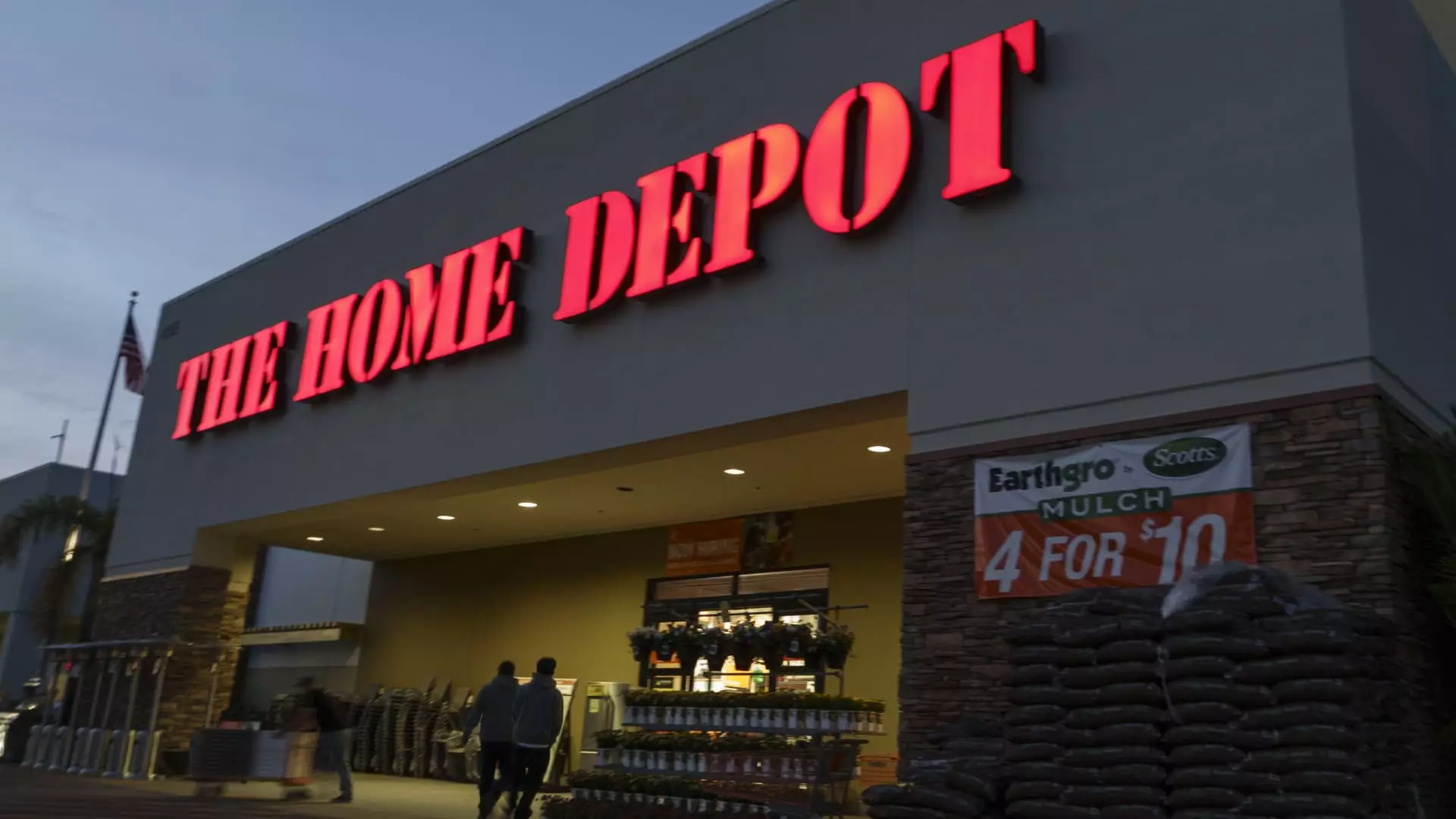As the U.S. stock market ebbs and flows with the uncertainties of sanction-driven tariffs and fluctuating earnings reports from major corporations, investors find themselves navigating through increasingly choppy waters. The prevailing sentiment is one of hesitation, as market volatility continues to influence investment strategies. For those craving a semblance of stability amidst the chaos, dividend stocks — often perceived as safer harbors — appear more enticing than ever. At a time when economic indicators are jarring, particularly in growth sectors, the insights provided by Wall Street’s most seasoned analysts become paramount in shaping financial decisions.
Home Depot: A Beacon of Resilience
One of the foremost companies emerging from this tumultuous environment is Home Depot (HD). The home improvement retailer has recently reported lackluster quarterly earnings that reflect a mixed bag of results. However, the firm has reaffirmed its full-year guidance, demonstrating an unexpected level of resilience in a marketplace where consumer confidence appears to be wavering. With a promise to maintain prices in lieu of tariff pressures, Home Depot has declared a robust dividend payout of $2.30 per share — appealing to investors looking for return consistency. However, the metrics tell a more complex story. While the current dividend yield stands at 2.5%, other analysts are now questioning whether this performance will sustain given the shifting economic landscape.
Raising eyebrows, Evercore’s analyst Greg Melich has maintained a buy rating on Home Depot stock, positing a price target of $400. This target showcases confidence, though one must consider whether this optimistic outlook is grounded or simply a reflection of a favorable past performance. The analyst suggests that there is a latent transformation underway within the company, as signs of traffic stabilization and an uptick in online sales growth unfold. Yet, could this be a mirage crafted by a temporary upturn? True, the metrics are promising, yet Home Depot’s ability to navigate future headwinds remains questionable.
Diamondback Energy: Riding the Oil Rollercoaster
As volatility plagues various sectors, Diamondback Energy (FANG) approaches its future with more pragmatism than exuberance. This independent oil and gas entity saw promising first-quarter results but subsequently moderated its full-year activity projections amid ongoing commodity price unpredictability. The decision to curtail capital expenditures in favor of maximizing free cash flow underscores a necessary caution in financial planning. By distributing $864 million to shareholders this quarter, which represents a remarkable 55% of adjusted free cash flow, Diamondback illustrates a commitment to its investor base, though many are left to wonder whether such controlled measures mark a paradigm shift in operational strategies or merely a temporary reaction to market conditions.
Analyst Scott Hanold of RBC Capital portrays a favorable picture, reiterating a buy rating with a price target of $180. His assertion that the reduced capital budget will not compromise Diamondback’s operational momentum speaks to a possible fortification of long-term gains. However, this brings forth the critical question: can the company’s focus on free cash flow sustain investment in growth initiatives? It remains to be seen whether Diamondback can effectively harness its strategies without sacrificing progress.
ConocoPhillips: The Dividends of Future Outlook
Lastly, ConocoPhillips (COP) stands as another formidable player in the energy domain, garnering attention with better-than-expected earnings. As similar caution spreads through the oil sector, ConocoPhillips has adjusted its guidance but maintains a robust outlook for production. The company’s quarter saw distributions totaling $2.5 billion, undeniably a significant commitment to shareholders. With a dividend yield of approximately 3.7%, ConocoPhillips offers a compelling potential for investors seeking returns.
Goldman Sachs’ Neil Mehta underscores the uncertainty swirling around oil prices, yet he harbors optimism for long-term gas prices. While the potential for low breakeven costs looms on the horizon, one cannot ignore concerns surrounding COP’s fluctuating capital return target, which leads to questions about long-term investment stability. When will the waters calm, and can ConocoPhillips persevere through the volatility with the same vigor?
In the final analysis, as dividends draw investors toward perceived safer waters in the face of daunting market realities, one must tread minimally. The expectation for stability is tempting, but is it rooted in reality? While Home Depot, Diamondback Energy, and ConocoPhillips present compelling narratives, underlying uncertainties could easily unravel their stories. Investing, after all, remains a balancing act between hope and caution, and a sagacious approach is needed to navigate these turbulent times.

